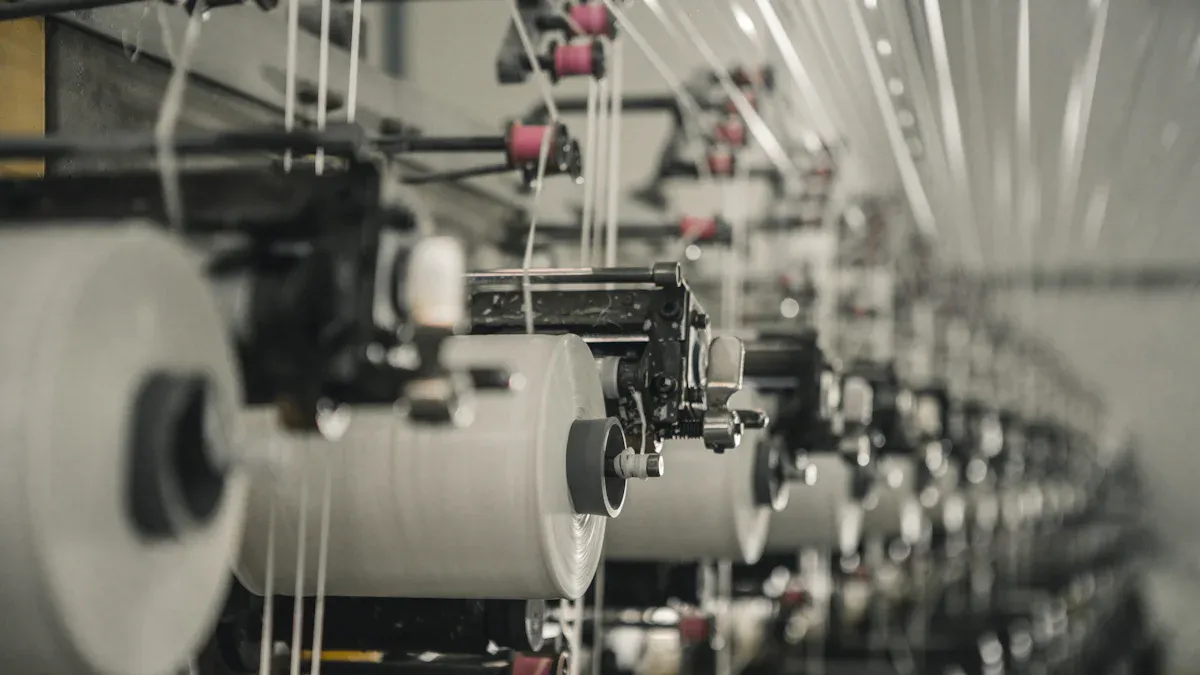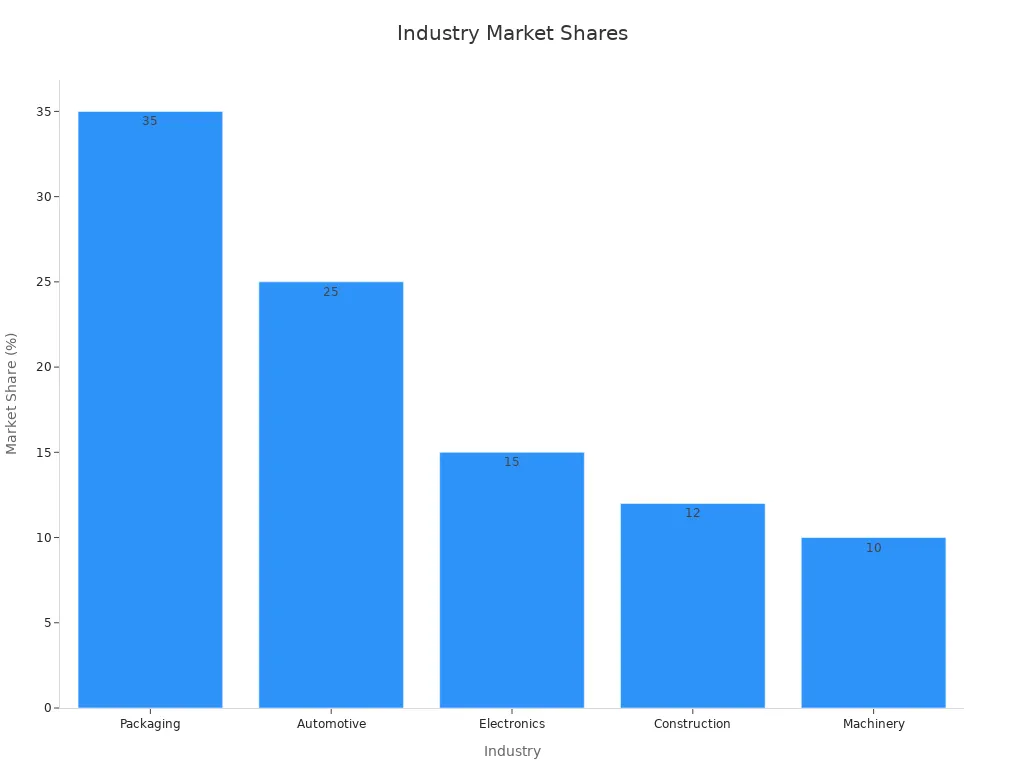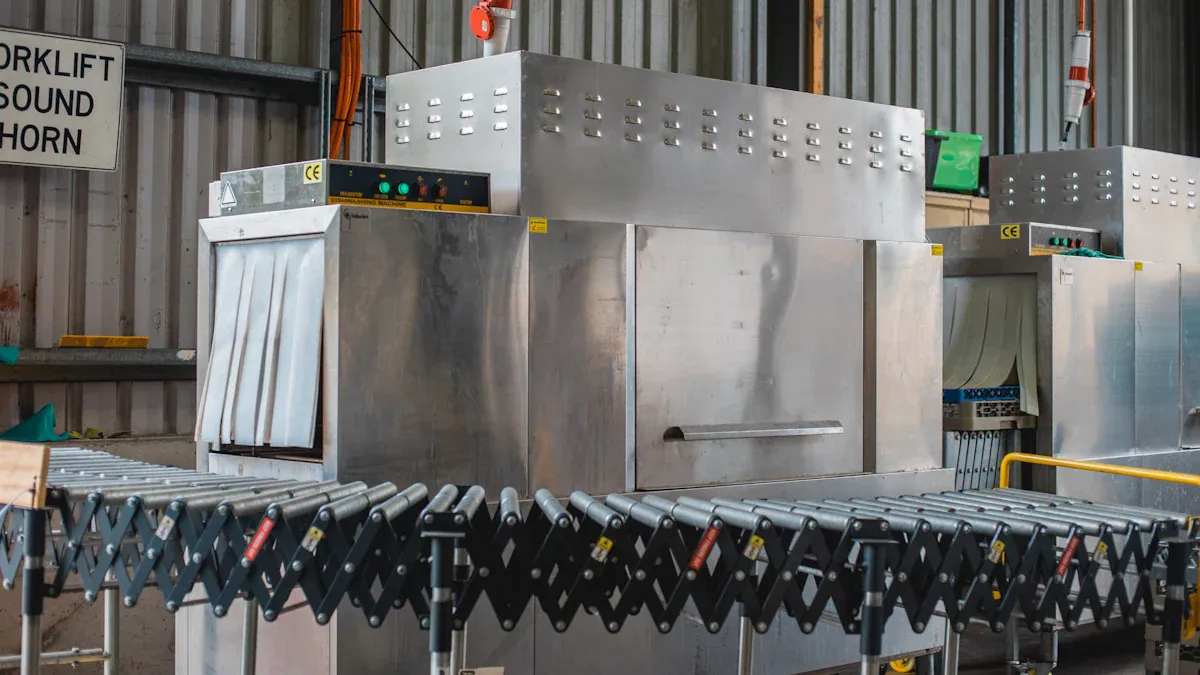
Choosing the right Plastic Pelletizer helps manufacturers meet their production goals and stay competitive. The global market for Plastic Granulator Machines is expanding fast, driven by demand for tailored solutions in packaging, automotive, and construction. A Plastic Pellet Making Machine or Granulating Machine that matches material type and output needs boosts efficiency and product quality.
Key Takeaways
- Choose a plastic pelletizer that fits your material type and production volume to improve efficiency and pellet quality.
- Understand the differences between pelletizer types—strand, underwater, and water-ring—to pick the best one for your plastic and output needs.
- Consider long-term costs, energy savings, and after-sales support to get the best return on investment and keep your production running smoothly.
Plastic Pelletizer Selection: Matching Material and Production Needs
Assessing Plastic Types and Properties
Every manufacturer works with different plastics. Some use virgin materials, while others rely on recycled plastics. The type of plastic affects how a Plastic Pelletizer performs. Studies show that microplastic generation during pelletizing can vary a lot. For example, the number of microplastics created per ton ranges from about 2.13 × 10^5 to 9.79 × 10^7 particles. Virgin plastics often produce more and smaller microplastics. Recycled plastics tend to create fewer and larger particles. This means recycled plastics may help reduce microplastic pollution. Knowing the properties of each plastic helps manufacturers pick the right pelletizer for their needs.
Determining Production Volume and Pellet Quality
Production volume and pellet quality matter in every industry. Different sectors need pellets with special features. The table below shows how industries shape pellet requirements:
| Industry/Application | Market Share (%) | Growth Trend/Driver | Pellet Quality Requirement |
|---|---|---|---|
| Packaging | 35 | Shift to sustainable, recyclable materials | Sustainable, recyclable pellets |
| Automotive | 25 | Lightweight vehicles, EVs | Strong, flexible, heat-resistant pellets |
| Electronics | 15 | Smart devices, consumer electronics | Durable, insulating pellets |
| Construction | 12 | Urbanization, infrastructure | Durable, energy-efficient pellets |
| Machinery | 10 | Steady demand | Specialized mechanical performance |

Manufacturers in the automotive field need pellets that can handle heat and chemicals. The packaging industry looks for sustainable options. Each sector pushes for high-quality pellets that fit its products.
Forecasting Future Capacity Requirements
Manufacturers must plan for the future. Market research predicts a big jump in plastic pelletizing capacity by 2030. Sustainability goals, new rules, and better technology drive this growth. Many companies now choose twin-screw pelletizers because they work well with many types of plastics, including recycled and bio-based materials. The Asia-Pacific region leads this growth, thanks to more recycling and new factories. North America and Europe also see steady increases, pushed by strict environmental rules and customer demand for green products. Automation, smart machines, and energy-saving features will help companies meet these new needs.
Plastic Pelletizer Types and Key Decision Criteria

Comparing Strand, Underwater, and Water-Ring Pelletizers
Manufacturers often wonder which pelletizer type fits their needs best. Each type has strengths and works better with certain materials or production goals. Strand pelletizers cool plastic strands in water or air before cutting. They offer flexibility and work well for rigid or semi-rigid plastics. These machines are simple and cost less, but they need more space for water baths and drying conveyors. Operators can change materials quickly, which helps with small or mid-sized batches.
Underwater pelletizers cut molten plastic strands in a water-filled chamber. This method cools pellets instantly and creates uniform shapes. Underwater systems handle sticky, elastic, or heat-sensitive plastics with ease. They suit large-scale production and need less operator attention. The compact design saves floor space, but the initial cost is higher.
Water-ring pelletizers combine features from both systems. They use a rotating water ring to cool and move pellets. This design works for medium viscosity plastics and offers a balance between flexibility and automation.
| Pelletizer Type | Cooling Method | Pellet Quality | Throughput & Scale | Flexibility | Space Needs | Best For |
|---|---|---|---|---|---|---|
| Strand | Water/air bath before cutting | Good, but can vary | Small to large | High | More space | Rigid/semi-rigid plastics |
| Underwater | Cut in water chamber | Very uniform, less dust | High, stable | Less (best for mass runs) | Compact | Sticky, elastic, heat-sensitive plastics |
| Water-Ring | Rotating water ring | Moderate, size by die hole | Low to medium | Balanced | Moderate | Medium viscosity, recycled plastics |
Tip: Underwater pelletizers shine in high-volume, specialty plastic production. Strand pelletizers win for flexibility and lower cost.
Single-Screw vs. Twin-Screw Plastic Pelletizers
Choosing between single-screw and twin-screw machines depends on the job. Single-screw pelletizers have a simple design. They cost less and use less energy. Small and medium businesses often pick them for basic recycling or straightforward tasks. Maintenance is easy, and operators can learn quickly.
Twin-screw pelletizers handle complex jobs. They mix, blend, and process tough polymer blends. These machines cost more at first and need skilled maintenance. However, they save energy over time and boost output quality. Twin-screw systems suit industries like automotive and packaging, where high-quality pellets matter most.
| Aspect/Metric | Single-Screw Pelletizers | Twin-Screw Pelletizers |
|---|---|---|
| Initial Investment | Lower | Higher |
| Energy Consumption | Lower per kg | Up to 28.7% savings |
| Maintenance Costs | Lower, simple upkeep | Higher, needs expertise |
| Throughput | Small/medium scale | High, complex tasks |
| Mixing & Output Quality | Basic mixing | Superior mixing, less scrap |
| ROI | Longer (e.g., 5.2 years) | Faster (e.g., 3.8 years) |
| Regulatory Compliance | Basic | Meets strict standards |
Twin-screw machines may cost more, but they pay off with better pellets and faster returns.
Material Compatibility and Product Consistency
A good Plastic Pelletizer must match the material. Particle size, moisture, and binder choice all affect pellet quality. When manufacturers use narrow particle size ranges, pellets turn out more uniform and dense. Smaller particles increase surface area, which helps pellets stick together better.
Moisture and binder content also matter. For example, adding 15% molasses can boost pellet strength and durability. Too much moisture or binder, though, can cause drying problems and raise costs. Operators must balance these factors for the best results.
- Moisture, binder, particle size, and machine speed all shape pellet quality.
- The right mix leads to strong, dense, and uniform pellets.
- Optimized settings improve both product consistency and machine productivity.
Note: Consistent pellets mean fewer problems in downstream processes and better product performance.
Energy Efficiency and Operational Costs
Energy use and running costs play a big role in choosing a pelletizer. Twin-screw machines can save up to 30% more energy than older models. They use about 0.8–1.0 yuan per ton of pellets. Single-screw machines use less energy for simple jobs but may not handle complex blends as well.
Maintenance costs also matter. Industrial-grade twin-screw pelletizers need about 10% of their price in yearly upkeep. Still, their energy savings and higher output can make up for this over time.
Manufacturers should check both energy bills and maintenance needs before buying new equipment.
Maintenance, Safety, and Environmental Compliance
Safe and clean operations protect workers and the environment. Good maintenance keeps machines running and prevents pellet spills. Many factories follow daily cleaning routines and inspect for loose pellets. Workers sweep up spills and dispose of pellets properly to avoid pollution.
Industry programs like Operation Clean Sweep help companies prevent pellet loss. Over 20,000 U.S. workers have trained in spill prevention. More than 60% of U.S. resin production now follows these best practices. Regular inspections and employee training keep facilities safe and compliant.
- Seal outlet caps and repair bags to stop spills.
- Clean under pallets and machines after each run.
- Train staff on spill response and safe handling.
Keeping a clean facility not only saves money but also meets strict environmental rules.
Cost, ROI, and After-Sales Support
Cost is always a key factor. Plastic Pelletizer prices range from 0.29 million to 2.5 million RMB, depending on type and size. Underwater pelletizers cost more but offer higher granulation rates (up to 98%) and better pellet consistency (±0.1 mm). Maintenance costs run about 10% of the equipment price each year.
Return on investment (ROI) depends on machine type and production needs. Twin-screw machines often deliver faster ROI due to energy savings and higher output. After-sales support matters, too. Reliable suppliers offer training, spare parts, and quick repairs, which reduce downtime and keep production on track.
Smart buyers look beyond the sticker price. They weigh long-term savings, support, and machine reliability.
Choosing the right Plastic Pelletizer helps every manufacturer reach their goals. They should check material type, production size, and pellet quality. Smart buyers look at cost, support, and machine fit. With these tips, anyone can pick the best machine for their needs.
FAQ
What is the main difference between strand and underwater pelletizers?
Strand pelletizers cool strands before cutting. Underwater pelletizers cut plastic in water. Underwater models work better for sticky or heat-sensitive plastics.
How often should a manufacturer perform maintenance on a pelletizer?
Most manufacturers check machines daily and do full maintenance every few months. Regular cleaning and inspection help prevent breakdowns.
Can one pelletizer handle both virgin and recycled plastics?
Some pelletizers, like twin-screw models, handle both types well. They mix materials better and keep pellet quality high.
Post time: Jun-30-2025